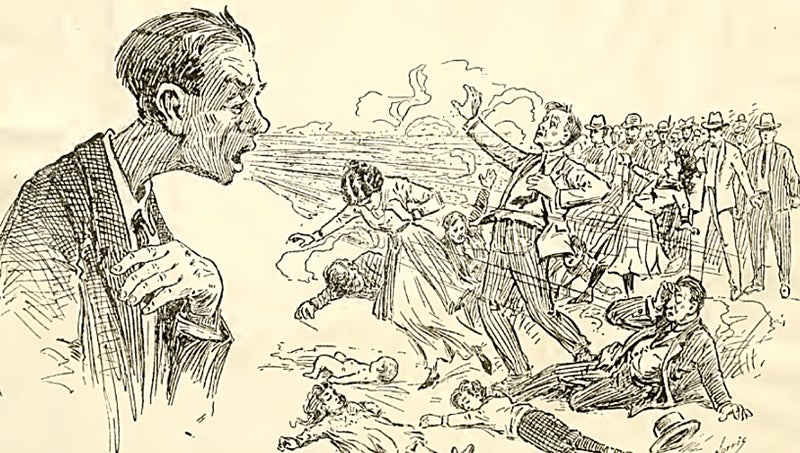Presentation to explore past Pamlico pandemics
Published 6:10 pm Monday, May 4, 2020

- SPREADING SICKNESS: The second in a two-panel political cartoon from 1919, this illustration compares the lethality of the flu pandemic to the casualties North Carolinians suffered in World War I. The image estimates 16,644 state residents died from the virus in the previous year. (North Carolina Digital Collections)
|
Getting your Trinity Audio player ready...
|
Empty streets and businesses, school and churches shuttered, people doing their daily business behind a mask — while these unusual sights have become commonplace during the current COVID-19 pandemic, many North Carolinians were living under similar circumstances a century ago, as the dreaded “Spanish Flu” spread across the world.
It’s that famous 1918 pandemic, and its impact on Beaufort County, that will be the topic of presentation Thursday as Historic Port of Washington President Ray Midgett hosts a live stream presentation on “Past Pamlico Pandemics.”
“In researching it, it seems like they were dealing with a lot of the same issues we’re dealing with today,” Midgett said. “They didn’t call it social distancing back then, but there was a lot of push to have people wear masks and to stay away from each other. There was pushback on that too, back in those days.”
Between the spring of 1918 and early 1919, the disease killed approximately 14,000 people in North Carolina, and infected approximately 20% of the state’s population. An estimated 500,000 Americans died from the disease. Drawing on contemporary newspaper articles and other sources, Midgett’s presentation will also cover historical outbreaks in the 19th century, including a yellow fever epidemic that visited Washington in the mid-1800s. Looking back with the luxury of hindsight, Midgett says there are some lessons to be gleaned for our current situation.
“It’s been said that, ‘Those who choose to ignore history are condemned to repeat it,’” Midgett said. “In the spring (of 1918) it struck, but the peak in the fall in Beaufort County was in mid-October. I looked at death records for Beaufort County, and that’s where I saw most of the death records stated the cause of death as either flu or pneumonia. … It happened 100 years ago, and it could happen again. It didn’t hit Beaufort County early in the first wave in 1918, but it certainly did hit Beaufort County in the fall of 1918.”
Midgett’s presentation will be broadcast via Facebook Live starting at 7 p.m. Thursday evening and can be found at the Historic Port of Washington Project page @historicportofwashington. Non-Facebook users should also be able to tune into the presentation by searching for the Historic Port of Washington and clicking the Facebook link.





